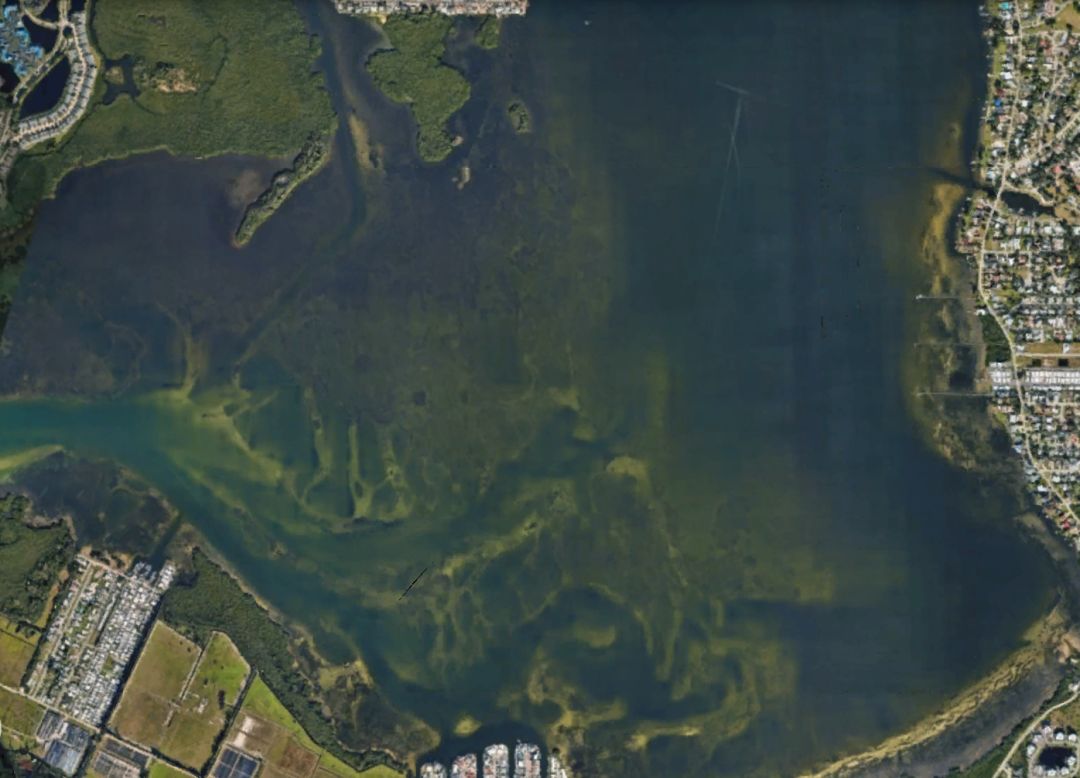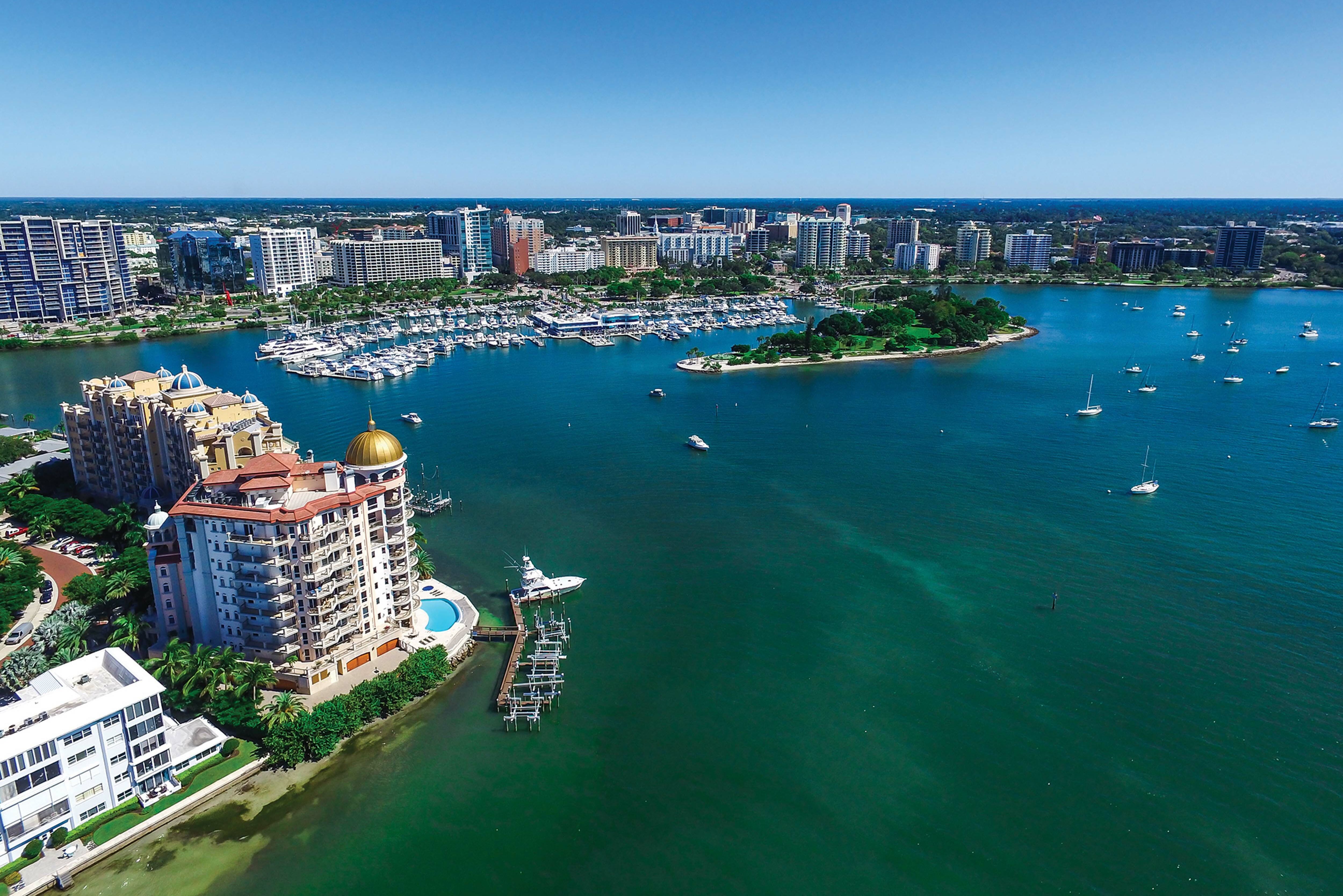A New Program Aims to Protect Vulnerable Local Mangroves

Mangroves are hotspots of diversity and integral parts of the ecosystem. They protect the shoreline and minimize the risk of damage from storm surge, flooding, and wind damage. They’re also breeding grounds and nurseries for fish.
Image: Julee75/Shutterstock.com
Abbey Tyrna grew up in Cape Coral, which has more than 400 miles of canals—more than any other city in the world. Among her fondest childhood memories: hanging out at a marina, playing among mangrove forests. On a seventh grade school field trip to Six Mile Cypress, she had another formative experience, walking chest-high through a swamp.
“I’ll never forget it because I stood silently and took it all in,” she says. “We need more quiet in our life, for sure. That’s always stayed with me.”

Suncoast Waterkeeper executive director Abbey Tyrna
Image: Courtesy Photo
Those experiences were more than 30 years ago, but they set Tyrna on her path as an environmentalist and scientist. Today, she’s the executive director of Suncoast Waterkeeper, which protects and restores the area’s beaches and coastal resources. The group’s newest initiative concerns one of the most critical parts of our ecosystem: mangroves. Specifically, Suncoast Waterkeeper’s mangrove ranger monitoring program allows volunteers to evaluate the health of mangrove forests and report potential mangrove trimming violations.
Fifteen volunteers attended the kickoff training on Jan. 20. Each team of four will have a licensed drone pilot, a boat owner, a spotter, and a data manager. Because mangroves can be difficult to swim through, they’re using drones to map the health of mangroves in vulnerable areas, specifically in Manatee County around Palma Sola Bay. Grants to fund the project were provided by the Manatee Fish & Game Association and the Charles & Margery Barancik Foundation.

Suncoast Waterkeeper mangrove rangers will monitor vulnerable mangrove forests, including those around Palma Sola Bay in Manatee County.
Image: Google Earth
Volunteers will survey the areas yearly, looking for places with a “heart attack,” where a mangrove in the center of a mangrove forest has died from drowning due to storms, sea level rise, development and poor water-management practices. Heart attacks can spread to neighboring mangroves when they aren’t located and fixed. The program's goal is to raise awareness of the local mangrove ecosystem and enable Suncoast Waterkeeper “to gather info, so that when we advocate for better politics, we have some data behind us,” Tyrna says.
Mangroves are protected under the Mangrove Trimming and Preservation Act of 1996, but sea level rise as a result of climate change, plus stormwater rise and increased housing developments, have put them in danger. “Everyone is coming here for the natural assets, but if they’re all gone, what are they going to come for? Our red tides?” Tyrna says. “Are we just going to do what’s best for the bottom line, without considering consequences for water quality?”
Last year was the world’s warmest year on record, according to the National Oceanic and Atmospheric Administration. As temperatures increase, dangerous storms become more common, sea levels rise and residents continue to flock to southwest Florida, the footprint of mangroves has declined drastically, mostly due to human activity. We’ve lost thousands of acres of mangroves in the Sarasota Bay estuary, per Suncoast Waterkeeper, which wants to prevent the same from happening in Manatee County.
Losing mangroves is problematic because they are hotspots of biodiversity and integral parts of the ecosystem. We need mangroves, which protect the shoreline and minimize the risk of damage from storm surge, flooding, and wind damage. They’re also breeding grounds and nurseries for fish.
“Without mangroves, there goes the fishing industry,” Tyrna says. “Equally important is what they do for the water. They ensure no erosion or sentiment into the bay, they help seagrass and they clean up the water.”
Suncoast Waterkeeper views the mangrove ranger initiative as a proactive approach to determine if “we need better laws to protect these mangrove systems from heart attacks,” Tyrna says, noting that “reduced mangrove density means reduced health of the system.”
Tyrna suggests that residents who live on the coast consider planting mangroves. If you don’t live on the coast, she says to keep an eye out for overzealous mangrove trimming, which you can report to Suncoast Waterkeeper through its “Eyes on the Suncoast” program. She also urges people to ask their local officials how they’re working to protect vulnerable systems from rising sea levels and over-development.
“We are long-term thinkers,” Tyrna says. “I want my grandchildren to enjoy what we've enjoyed.”



